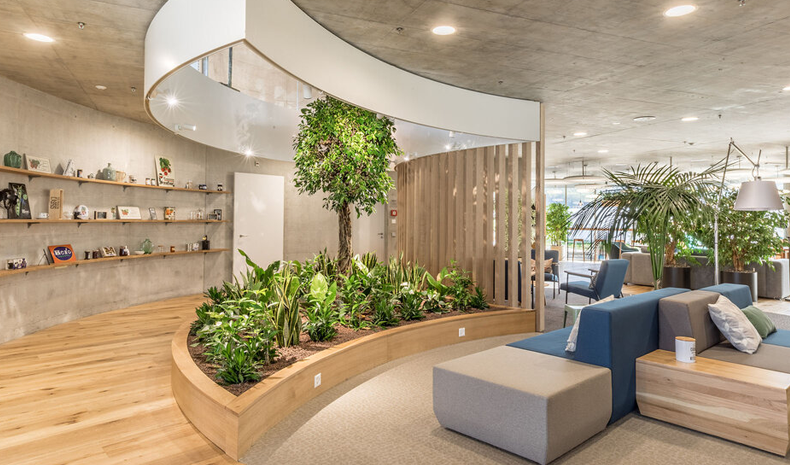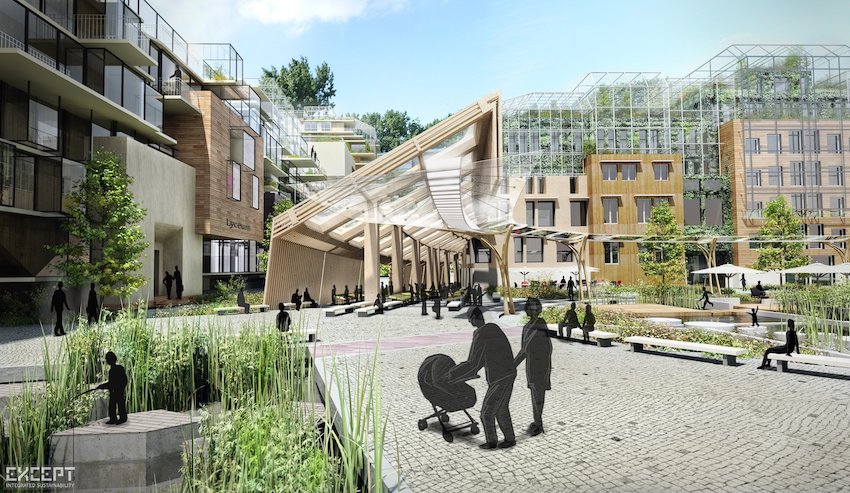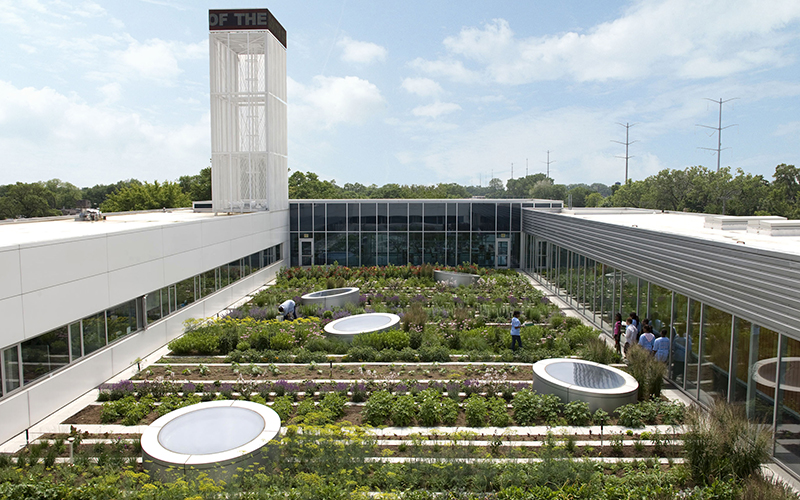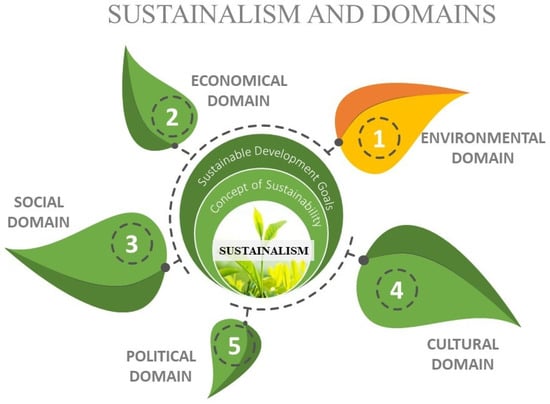Creating Harmony: Exploring the Benefits of Biophilic Design in Public Spaces
Biophilic design is an approach that aims to establish a connection between individuals and nature, thereby enhancing the environments of public spaces. This design concept underscores its significance, benefits, and essential elements that contribute to the creation of a harmonious environment.
By integrating natural light and greenery, as well as employing sustainable materials, these elements possess the potential to transform urban landscapes. Successful examples of biophilic design from around the world serve as inspiration for reimagining public spaces within local communities.
What Is Biophilic Design?
Biophilic design is an innovative approach that aims to integrate natural elements within built environments, thereby fostering a harmonious relationship between urban spaces and the natural world.
This design philosophy promotes human well-being through the incorporation of features such as natural light, vegetation, and water elements into architecture and public spaces.
By emphasizing sustainability, biophilic design enhances aesthetic value while simultaneously supporting biodiversity and improving air quality.
This creates restorative environments that can have a significant impact on mental health and community resilience.
Ultimately, biophilic design represents a crucial shift in urban planning, reflecting a deeper understanding of our connection to nature and the importance of ecological design principles.
Why Is Biophilic Design Important for Public Spaces?
Biophilic design plays a vital role in public spaces by fostering a connection between individuals and the natural environment, which ultimately enhances human health and well-being.
The integration of elements such as urban greenery, natural light, and water features can improve air quality and temperature regulation, thereby contributing to a healthier atmosphere.
Additionally, interaction with nature has been shown to positively influence mental health and social interaction, promoting feelings of happiness and enhancing social cohesion within communities.
Public spaces that incorporate biophilic principles also encourage community engagement, inviting diverse populations to connect with one another and their environment, thereby fostering social equity.
What Are the Benefits of Biophilic Design in Public Spaces?
The advantages of biophilic design in public spaces are numerous, significantly enhancing the user experience within outdoor environments. By integrating natural elements into the design, these spaces promote restorative environments that support mental health and well-being while fostering social interaction among community members.
Features such as green roofs, living walls, and natural landscaping not only provide visual access to greenery but also promote urban biodiversity, creating habitats for urban wildlife. These design choices contribute to ecological restoration and resilience, rendering cities more adaptable to climate change while enhancing the overall aesthetic value of public parks and community spaces.
The incorporation of biophilic principles cultivates a sense of environmental stewardship among residents, encouraging them to engage with and care for their surroundings. This connection to nature may lead to increased physical activity, as individuals are drawn to these invigorating spaces for leisure and social gatherings.
The presence of natural elements has been demonstrated to reduce stress and anxiety, thereby improving psychological health and fostering community cohesion. By prioritizing urban ecosystems, metropolitan areas can experience not only enhanced biodiversity but also improved air quality and temperature regulation, further benefiting all who inhabit or visit these thoughtfully designed public areas.
What Elements Are Included in Biophilic Design?
Biophilic design encompasses a diverse range of elements that emphasize the integration of nature within built environments, thereby enhancing both aesthetic value and user experience.
Key components include the incorporation of natural light, which significantly improves air quality and fosters a sense of place. Additionally, the utilization of living plants and urban greenery promotes biodiversity.
Water features, such as fountains or ponds, not only provide sensory experiences that engage the community but also enhance the ecological footprint of urban areas.
Moreover, the use of natural materials and colors establishes a seamless connection between indoor and outdoor environments, enriching the sensory experiences within public spaces.
1. Natural Light and Views
Natural light and views are fundamental components of biophilic design, significantly enhancing well-being and fostering restorative spaces within public environments. Access to natural sunlight not only improves air quality but also regulates temperature, thereby creating a comfortable atmosphere conducive to social interaction and relaxation.
Views of natural landscapes or urban greenery can greatly elevate the user experience, contributing to improved mental health and overall happiness among individuals utilizing these spaces. Furthermore, the presence of natural light can positively influence work productivity, making it a vital aspect of public park design and community spaces.
These elements not only cultivate a sense of connection to nature but also act as essential tools in mitigating stress and anxiety levels, ultimately promoting a healthier lifestyle. In environments where natural light is abundant and users can appreciate vibrant greenery, individuals often experience enhanced creativity and focus, making such spaces ideal for collaboration and innovation.
By incorporating these features into urban planning, communities can effectively promote holistic health benefits, ensuring that individuals feel revitalized and motivated in their daily activities, thereby enhancing overall life satisfaction and workplace performance.
2. Living Plants and Greenery
Incorporating living plants and greenery constitutes a fundamental aspect of biophilic design, playing a critical role in enhancing urban biodiversity and promoting nature therapy. These elements not only add aesthetic value to public spaces but also contribute to ecological restoration and environmental awareness among community members.
By fostering a diverse range of flora, urban environments can significantly improve air quality and regulate temperatures, thereby demonstrating the profound impact of ecological design. The integration of greenery serves as a restorative influence on the urban psyche, providing nature therapy that assists in reducing anxiety and enhancing cognitive function.
Thoughtful landscaping choices that create habitats are essential for sustaining local wildlife, ultimately enriching the urban ecosystem. As individuals engage with these green spaces, they develop a deeper appreciation for nature and its preservation, which reinforces the importance of nurturing both personal well-being and the environment we share.
3. Natural Materials
The incorporation of natural materials in biophilic design plays a crucial role in enhancing the aesthetic value and sustainability of outdoor environments. Materials such as wood, stone, and bamboo not only elevate the visual appeal of public spaces but also adhere to sustainable practices that minimize the ecological footprint of urban areas.
The use of these materials fosters a sense of place and cultural heritage, enabling users to establish a deeper connection with their environment. Additionally, natural materials can improve air quality and contribute to healthier spaces for community interaction, thereby enhancing the overall user experience in parks and gardens.
By integrating these elements into their designs, planners and architects can create harmonious spaces that reflect the surrounding landscape while encouraging interaction and exploration. The tactile and sensory attributes of natural materials evoke feelings of warmth and comfort, making these areas more welcoming. As individuals engage with their surroundings, they may experience improved well-being and a stronger sense of community.
Furthermore, utilizing resources that have historical significance or local provenance can strengthen ties to cultural heritage, promoting a narrative that resonates with users and enriches their experiences in these carefully designed outdoor environments.
4. Water Features
Water features represent a compelling component of biophilic design, significantly contributing to sensory experiences that enhance urban ecosystems and promote mental well-being. Elements such as fountains, ponds, and streams not only offer aesthetic appeal and visual access to nature but also foster a calming atmosphere that facilitates social interaction among community members.
Thoughtfully designed water features can play a crucial role in ecological design by supporting biodiversity and implementing water management strategies that alleviate the effects of urban heat islands. The integration of these elements cultivates a profound connection to nature, making public spaces more inviting and restorative.
Incorporating water elements into urban landscapes serves not only to enhance the beauty of the surroundings but also to engage the senses, inviting individuals to experience the soothing sounds of flowing water and the refreshing reflections it produces. These sensory experiences are essential for improving mental well-being, providing a natural refuge from the fast-paced urban environment.
Water features can attract diverse wildlife, thereby enriching biodiversity and contributing to healthier urban ecosystems.
Furthermore, by creating spaces that encourage community interaction, water features strengthen social ties and promote mental health, ultimately improving the quality of life for urban residents.
5. Natural Colors and Patterns
Natural colors and patterns play a crucial role in biophilic design, enhancing the aesthetic appeal of public spaces and contributing to environmental psychology. By incorporating color palettes inspired by nature, designers can create vibrant environments that promote a sense of calm and well-being among users.
Patterns found in natural landscapes, such as those observed in foliage or water, can also be seamlessly integrated into architecture and landscaping to foster a more organic connection to the surrounding environment. This deliberate integration not only helps establish a sense of place but also encourages community engagement, making public parks and gardens more inviting.
Such design choices not only enhance the visual appeal of an area but also promote mental health by alleviating stress and anxiety through visual access to soothing natural elements. The psychological benefits extend beyond aesthetics; they create a sanctuary where individuals can reconnect with nature amid urban settings.
This connection strengthens community bonds, as shared spaces adorned with natural hues and organic forms encourage social interactions and foster a collective appreciation for the environment. Ultimately, embracing these principles in biophilic design aligns with the growing recognition of the need to nurture mental well-being within our communal spaces.
How Can Biophilic Design Be Incorporated into Public Spaces?
Incorporating biophilic design into public spaces necessitates a collaborative approach that takes into account community needs and the surrounding environment.
Effective strategies involve engaging stakeholders in participatory design processes that prioritize the integration of natural elements, ensuring that public parks and gardens are reflective of local culture and biodiversity.
Urban planning can greatly benefit from the adoption of biophilic principles by developing pedestrian-friendly pathways that facilitate connections to green spaces and promote social interaction.
Furthermore, the integration of nature-based solutions, such as green roofs and walls, can significantly enhance ecological performance while creating restorative environments for community members.
1. Incorporating Natural Elements into Architecture
Incorporating natural elements into architecture represents a fundamental component of biophilic design, facilitating the creation of indoor environments that resonate with the natural world. This approach entails the use of materials such as wood and stone, alongside the design of spaces that maximize natural light and views of greenery.
By fostering a connection to outdoor environments, architects can significantly enhance user experience and promote mental well-being. The integration of water features and living vegetation within building design not only improves indoor air quality but also contributes to ecological sustainability, aligning architectural practices with the principles of biophilic design.
The application of these methods not only enhances the aesthetic appeal of the space but also plays a crucial role in improving the psychological health and overall productivity of occupants. For example, large windows and open spaces that seamlessly connect with outdoor landscapes allow natural light to permeate interiors, which has been shown to elevate mood and reduce stress levels.
The strategic placement of plants and the incorporation of green roofs serve not only as aesthetic enhancements but also actively purify the air and regulate indoor temperature.
By adopting these strategies, architects are able to create visually appealing structures while cultivating environments that support well-being and sustainability. This approach leads to a harmonious integration of design and ecological principles.
2. Creating Green Spaces and Gardens
The establishment of green spaces and gardens is crucial for the effective implementation of biophilic design in urban environments, providing community spaces that encourage interaction and promote overall well-being.
These areas can be designed using native plants to enhance urban biodiversity and support ecological restoration efforts. Thoughtfully planned gardens serve as outdoor environments where individuals can connect with nature, thereby fostering mental health and community resilience.
By prioritizing green infrastructure in urban planning, cities can create restorative environments that cater to diverse populations and improve the overall quality of life.
Urban biodiversity is vital in developing resilient ecosystems capable of withstanding the challenges posed by climate change and urbanization. These green areas not only offer habitats for various species but also contribute to enhanced air quality and assist in stormwater management, thereby reducing flooding risks.
By promoting community engagement through gardening initiatives, neighborhoods can foster a sense of belonging and stewardship among residents. Ultimately, investing in these green initiatives demonstrates a commitment to sustainable urban development, ensuring that cities remain livable for both current and future generations.
3. Using Biophilic Design in Interior Design
Utilizing biophilic design in interior design is essential for creating environments that prioritize human well-being and foster a connection to nature. This approach incorporates natural materials, colors, and patterns that evoke the essence of the outdoors, thereby enhancing sensory experiences within indoor spaces.
By thoughtfully selecting furnishings and finishes that resonate with the natural world, designers can create spaces that not only appeal aesthetically but also nourish the spirit. The strategic placement of large windows facilitates the influx of natural light into interiors, thereby reducing dependence on artificial lighting and contributing to energy efficiency.
Incorporating living elements, such as vertical gardens or potted plants, not only improves air quality but also infuses vitality into otherwise sterile environments. Additionally, the inclusion of water features, such as fountains or aquariums, creates soothing auditory experiences that promote relaxation.
Ultimately, these principles work in concert to enhance overall well-being, enabling occupants to feel more invigorated and connected to their surroundings.
4. Incorporating Biophilic Design in Urban Planning
Incorporating biophilic design into urban planning is essential for the development of vibrant communities that prioritize the human connection to nature. This approach necessitates the integration of green infrastructure, such as parks, green roofs, and biodiversity corridors, into the urban landscape.
By fostering pedestrian-friendly pathways and facilitating community engagement, cities can enhance access to outdoor environments and promote social interaction among residents. Urban planning that adheres to biophilic principles significantly contributes to climate adaptation and resilience, ensuring that sustainable practices remain central to community development.
The inclusion of natural elements in urban environments not only enhances aesthetic appeal but also substantially improves the mental well-being and physical health of residents. Urban planners can leverage features such as urban forests and green walls to provide shade and mitigate urban heat, a crucial consideration as climate challenges intensify.
By creating spaces that encourage community gathering—such as community gardens and outdoor classrooms—biophilic design cultivates social bonds and fosters a collective sense of responsibility toward sustainability.
Such initiatives may also stimulate local economies by attracting tourism and encouraging residents to develop a deeper connection to their neighborhoods, ultimately nurturing a sense of community pride.
What Are Some Examples of Successful Biophilic Design in Public Spaces?
Successful instances of biophilic design in public spaces exemplify the transformative potential of incorporating natural elements into urban environments. These projects underscore the efficacy of landscape architecture in creating restorative spaces that enhance community well-being and promote ecological sustainability.
From urban parks featuring native plants to innovative architectural designs that incorporate living walls and maximize natural light, these examples illustrate the significant impact of biophilic principles on user experience and environmental stewardship.
By examining these successful cases, urban planners and architects can derive valuable insights for future developments that emphasize biodiversity and community engagement.
1. The Amazon Spheres in Seattle
The Amazon Spheres in Seattle exemplify the principles of biophilic design, effectively integrating urban greenery and natural light within a distinctive architectural framework. These glass-enclosed structures foster a dynamic environment for both employees and visitors, featuring a diverse array of plant species that enhance biodiversity and promote environmental awareness.
The Spheres not only elevate the aesthetic appeal of the urban landscape but also offer restorative spaces that encourage social interaction and well-being among users. This innovative approach to workspace design demonstrates a commitment to incorporating nature into daily life, highlighting the potential of biophilic principles within urban contexts.
Furthermore, the Spheres provide an immersive experience that engages the community and cultivates a connection with nature amidst the hustle and bustle of city life. By maximizing the advantages of natural light, these spaces contribute not only to the physical health of individuals but also significantly influence their mental well-being.
By encouraging exploration and education about the various plant species within, the Spheres promote environmental stewardship and foster a collective sense of responsibility toward sustainability. This dedication to both design excellence and community engagement positions the Spheres as a crucial resource for enhancing urban biodiversity and nurturing ecological consciousness among city inhabitants.
2. The Singapore Changi Airport’s Jewel
The Jewel at Singapore Changi Airport exemplifies the principles of biophilic design, seamlessly integrating water features and indoor gardens to create an extraordinary environment for travelers. This architectural marvel boasts the world’s tallest indoor waterfall, surrounded by lush greenery, which promotes a sense of tranquility and well-being for airport visitors.
By incorporating natural elements into the travel experience, the Jewel significantly enhances user satisfaction and underscores the importance of biophilic principles in densely populated urban environments. It serves as a benchmark for integrating nature into architecture, demonstrating how public spaces can foster a connection to the natural world and contribute to overall happiness.
Upon entering, guests are immediately enveloped by the soothing sounds of cascading water and the vibrant sight of lush foliage, effectively transporting them away from the frenetic airport atmosphere.
The thoughtfully designed layout of the indoor gardens encourages a seamless flow, promoting exploration and interaction among travelers. This immersive experience not only enhances the visual appeal but also fosters community engagement, as individuals gather to appreciate the captivating surroundings.
Ultimately, by prioritizing natural elements, the Jewel not only enriches the travel experience but also strengthens the connection between individuals and nature, inviting all to unwind and rejuvenate during their journeys.
3. The Bosco Verticale in Milan
The Bosco Verticale, also known as the Vertical Forest, in Milan exemplifies a pioneering approach to biophilic design within urban architecture by seamlessly incorporating lush greenery into residential buildings. This innovative project boasts thousands of trees and plants, effectively creating an urban forest that promotes biodiversity and improves air quality within the city.
By adhering to sustainable architecture principles, the Bosco Verticale not only enhances aesthetic appeal but also fosters a sense of place and community within a densely populated urban environment. Such successful implementations of biophilic design underscore the potential for enriching urban living through the integration of natural elements.
These towering structures serve as a living testament to the vital role of nature in urban life while also providing crucial habitat for various species, thereby encouraging wildlife to flourish in an otherwise concrete landscape.
The Vertical Forest’s sustainable architectural approach illustrates that urban development can coexist with environmental considerations rather than compromising them. This architectural achievement invites residents and visitors alike to engage meaningfully with their surroundings, thereby enhancing community interaction and instilling a shared sense of pride in the stewardship of the urban landscape.
Ultimately, this endeavor redefines urban living by demonstrating how the integration of green spaces can promote well-being and foster more vibrant communities.
4. The High Line in New York City
The High Line in New York City serves as a distinguished example of biophilic design, successfully transforming an abandoned elevated railway into a dynamic urban park that emphasizes community spaces and landscape architecture. This linear park features a diverse array of plantings and art installations that engage visitors while creating a distinctive environment for social interaction and relaxation.
By prioritizing urban biodiversity and green infrastructure, the High Line illustrates how innovative design can significantly enhance the quality of life in densely populated urban settings, fostering a profound connection to nature amidst the hustle and bustle of city life.
Visitors have the opportunity to explore a variety of carefully curated ecosystems, which not only promote wildlife habitation but also serve as an educational resource for understanding urban ecology. The integration of native species enhances local biodiversity, creating a sanctuary for pollinators such as bees and butterflies.
Furthermore, the High Line has evolved into a pivotal gathering point for community events and cultural activities, encouraging social interaction among diverse groups.
This urban park, characterized by its thoughtful landscape architecture, inspires environmental stewardship by motivating city residents to engage with nature and advocate for the preservation of green spaces. Consequently, the High Line has played a vital role in redefining urban living, demonstrating the potential of urban parks to cultivate both community spirit and ecological awareness.
Frequently Asked Questions
1. What is biophilic design and how does it relate to public spaces?
Biophilic design is an approach to architecture and interior design that incorporates elements of nature in order to create a more natural and sustainable environment. It is especially important in public spaces, as it has been shown to have numerous benefits for people’s physical and mental well-being.
2. What are some examples of biophilic design in public spaces?
Some examples of biophilic design in public spaces include incorporating natural materials such as wood and stone, incorporating plants and greenery, maximizing natural light, and creating spaces for interaction with nature such as outdoor seating areas or rooftop gardens.
3. How does biophilic design impact the overall experience of public spaces?
Biophilic design can greatly enhance the overall experience of public spaces by creating a more welcoming and calming atmosphere. It has been shown to reduce stress, improve mood, and increase productivity and creativity.
4. Can biophilic design be incorporated into existing public spaces?
Yes, biophilic design can be incorporated into existing public spaces. This can be done through renovations or updates, such as adding greenery or natural light, as well as through smaller changes like incorporating natural materials or creating spaces for people to connect with nature.
5. Are there any potential challenges or drawbacks to implementing biophilic design in public spaces?
While biophilic design has numerous benefits, there can be some challenges to implementation. These may include cost, maintenance of natural elements, and potential conflicts with other design goals. However, many of these challenges can be overcome with careful planning and consideration.
6. How can biophilic design help create more sustainable public spaces?
Biophilic design can help create more sustainable public spaces by reducing energy consumption through natural light and ventilation, using sustainable materials, and promoting a closer connection to nature which can increase people’s awareness and appreciation for the environment.

I’m Bruno, an architect with a deep passion for Biophilic Design in Urban Architecture. Throughout my career, I’ve focused on integrating natural elements into urban planning, and I created this site to share my insights and foster a deeper understanding of how biophilic principles can significantly enhance urban living. Dedicated to sustainable development, I continually explore innovative design solutions that promote both environmental and human well-being in city landscapes.














Publicar comentário